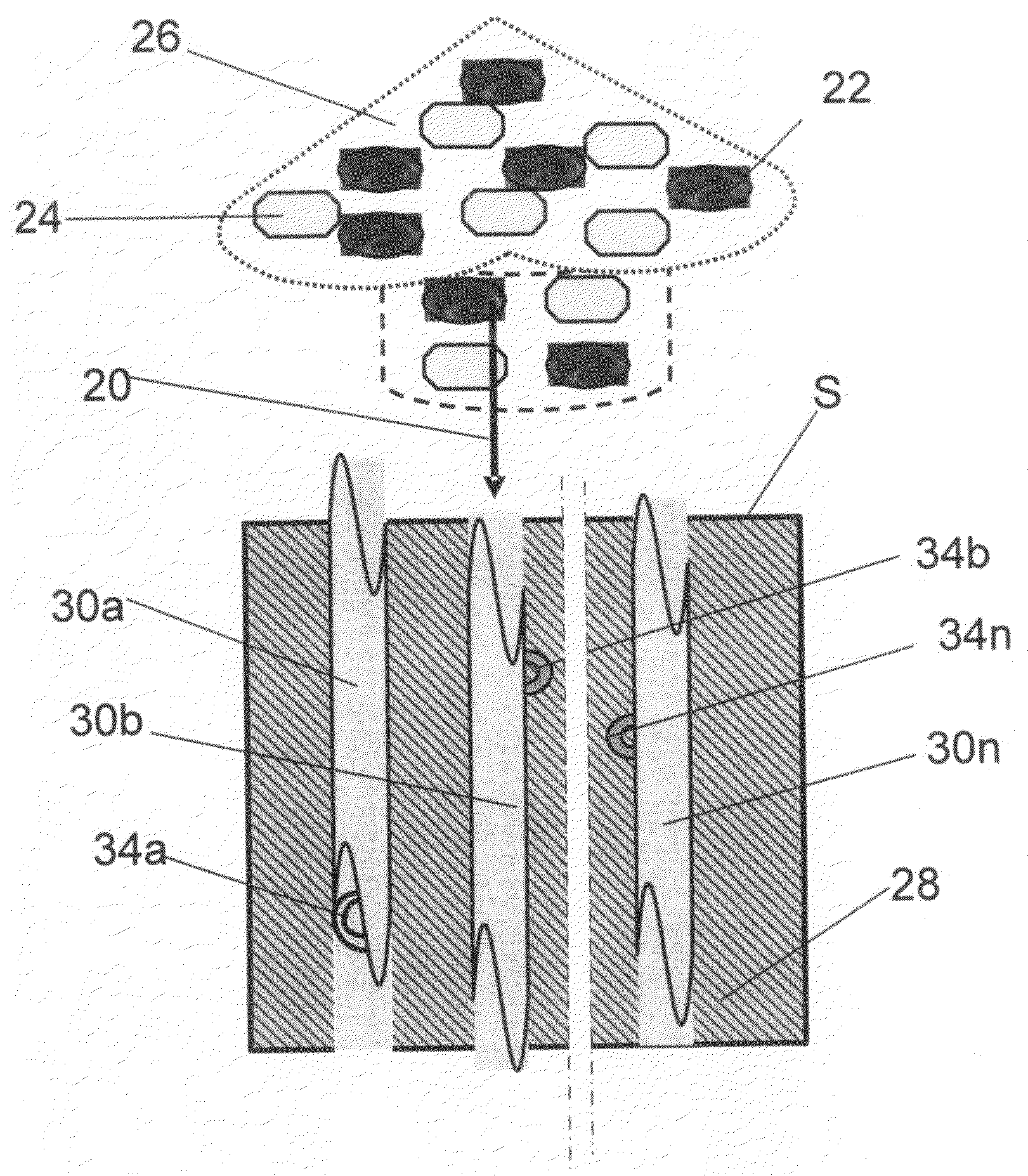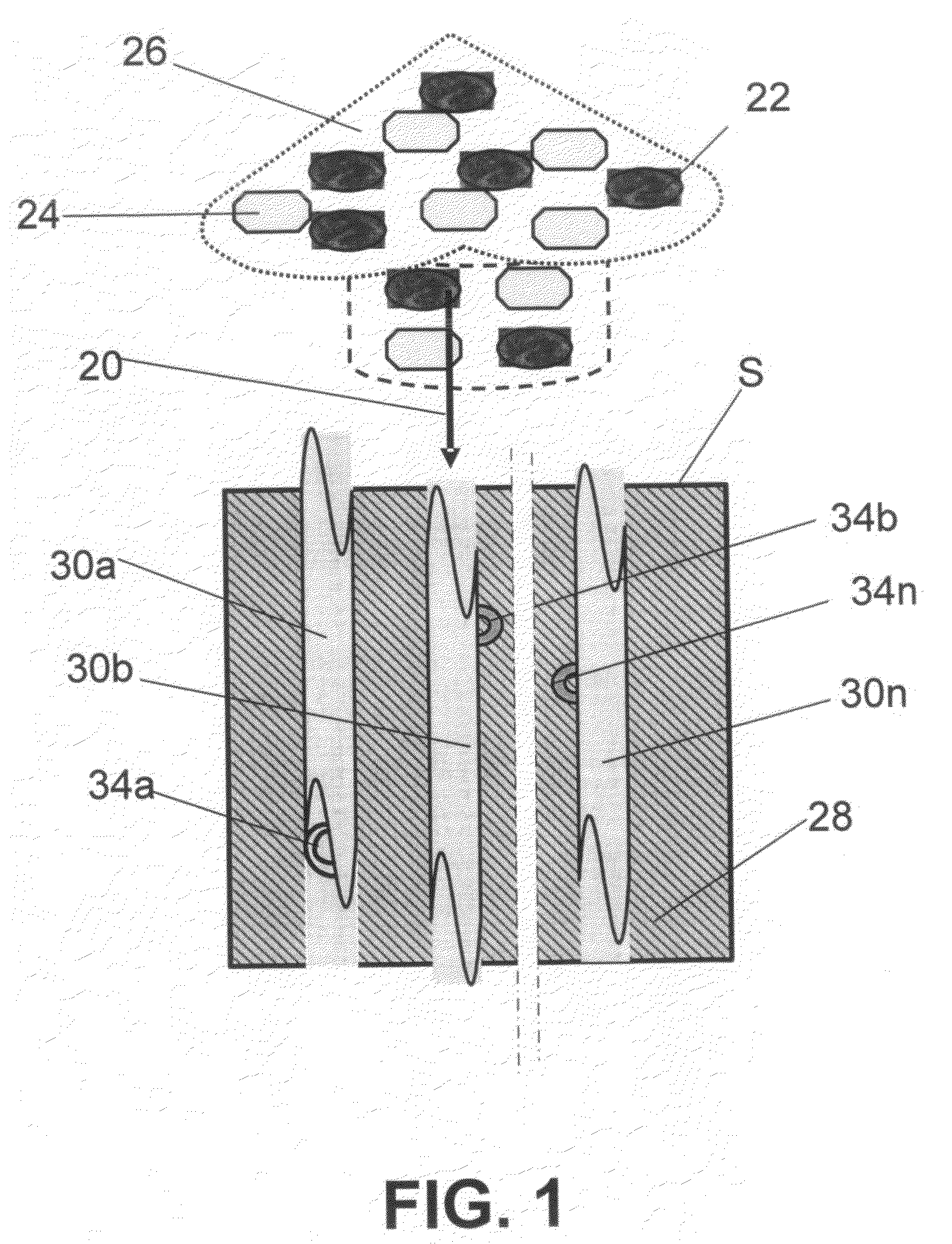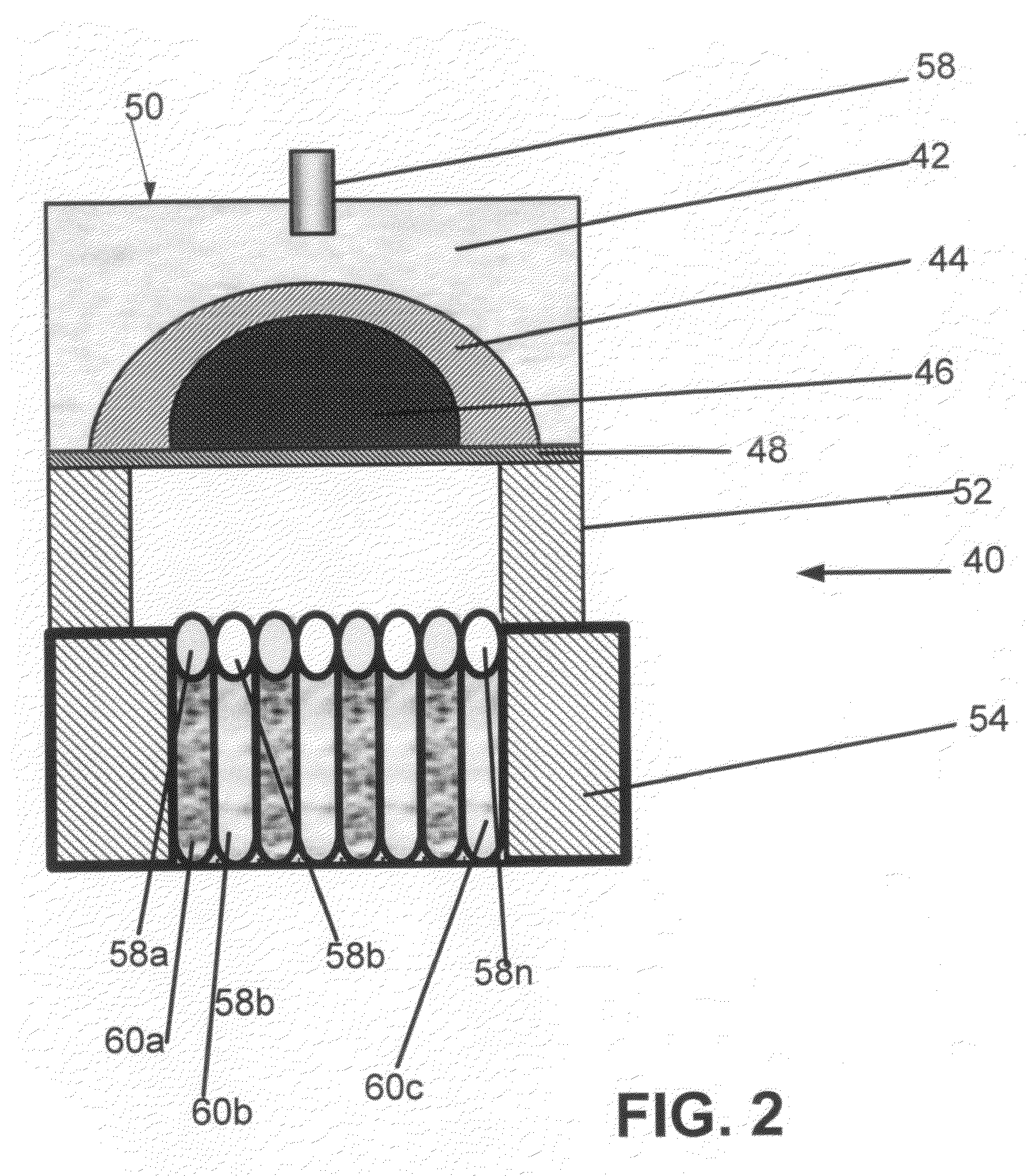Method of strengthening tool material by super-deep penetration of reinforcing particles for manufacturing a composite tool material
a tool material and super-deep penetration technology, applied in the field of composite material manufacturing, can solve the problems of inconvenient production and use of carcinogenic materials, limited physical properties of tungsten carbide (wc) or cobalt alloy as cutting tools employed in mining industry, and relatively low resistance of wc, so as to achieve uniform structure and mechanical properties.
- Summary
- Abstract
- Description
- Claims
- Application Information
AI Technical Summary
Benefits of technology
Problems solved by technology
Method used
Image
Examples
example 1
[0051]A specimen of an HSS type (6% W, 5% Mo) was treated according to the method of the invention with use of a jet of a working medium introduced into the end face of the specimen. Along its length, the jet had three portions similar to each other in velocity and density and was formed with instability in the lengthwise direction in the velocity range of 200 to 3000 m / sec and in the density range of 0.1 to 1.3 (with reference to the theoretical density of the working medium).
[0052]The specimen comprised a cylindrical steel body of about 40 mm in diameter and 100 mm in length and was mechanically treated to a smooth surface. The steel cylindrical specimen was installed vertically with a sliding fit in the opening of the container 54 (FIG. 2) and below the adjusting support 52 of the type described above with reference to FIG. 2. The support was adjusted to dimensions that after compression of the shell 44 of the cartridge 50 with the energy of the explosion could provide and guide ...
example 2
[0059]In this experiment, the accelerator used was the same as that in Example 1. The material of the blank steel and the dimensions of the blanks also were the same as those in Example 1. Upon completion of super-deep penetration with use of the working-medium jet in accordance with the scheme shown in FIG. 2, the treated blanks were subjected to the same mechanical treatment as in the preceding example. Example 2 differs from Example 1 in that the working-medium composition was prepared on the basis of ceramic powder of silicon carbide (shown in Table 3).
TABLE 3Compositions of Working-Medium MixturesTestNo.Composition1SiC (3-250 μm) 50% + Ni (1-100 μm) 40% +Al2O3 (20-50 μm) 10%2SiC (3-250 μm) 100%3SiC (3-250 μm) 10% + Ni (1-100 μm) 20% +Al2O3 (20-50 μm) 70%4SiC (3-250 μm) 50% + Ni (1-100 μm) 50%5SiC (3-250 μm) 10% + Ni (1-100 μm) 20% +TiB2 (40-50 μm) 70%
As shown in Table 4 below, deviation from the optimal composition essentially changed the mechanical properties of the obtained c...
example 3
[0062]Specimens of the composite tool material were manufactured and tested in the same manner as in Example 1 with regard to mechanical properties. The main distinction of Example 3 is that the initial size of the working medium particles differed from those used in Example 1.
[0063]The composites used are shown in Table 5, and the results of mechanical tests of the obtained composite materials are shown in Table 6.
TABLE 5Compositions of Working-Medium MixturesUsed for Treating Steel BlanksTestNo.Composition1TiCN (1-100 μm) 60% + Ni (1-100 μm) 30% +Si3N4 (0-60 μm) 10%2TiCN (3-14 μm) 60% + Ni (0-20 μm) 30% +Si3N4 (40-50 μm) 10%3TiCN (100-160 μm) 60% + Ni (120-200 μm) 30% +Si3N4 (3-14 μm) 10%4TiCN (120-160 μm) 60% + Ni (120-200 μm) 40%
TABLE 6Mechanical Properties of Composite Tool MaterialAfter Treatment by Method of Invention with Use of Compositionsin Table 5Strength with Referenceto Untreated SteelTestCompositionResistanceNo.No.to WearFlexural StrengthImpact Strength1—111211.31.151...
PUM
| Property | Measurement | Unit |
|---|---|---|
| Temperature | aaaaa | aaaaa |
| Length | aaaaa | aaaaa |
| Length | aaaaa | aaaaa |
Abstract
Description
Claims
Application Information
 Login to View More
Login to View More - R&D
- Intellectual Property
- Life Sciences
- Materials
- Tech Scout
- Unparalleled Data Quality
- Higher Quality Content
- 60% Fewer Hallucinations
Browse by: Latest US Patents, China's latest patents, Technical Efficacy Thesaurus, Application Domain, Technology Topic, Popular Technical Reports.
© 2025 PatSnap. All rights reserved.Legal|Privacy policy|Modern Slavery Act Transparency Statement|Sitemap|About US| Contact US: help@patsnap.com



